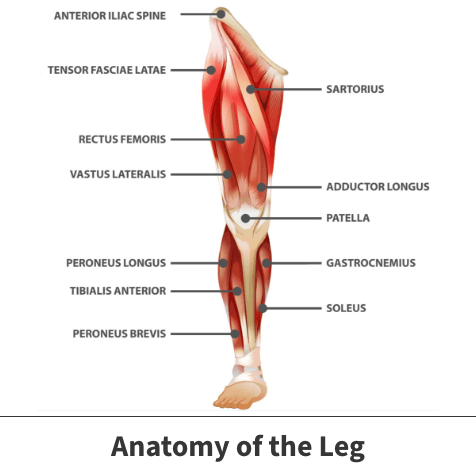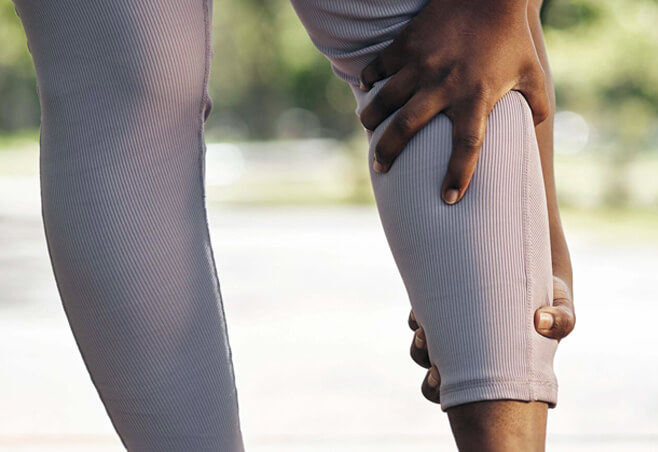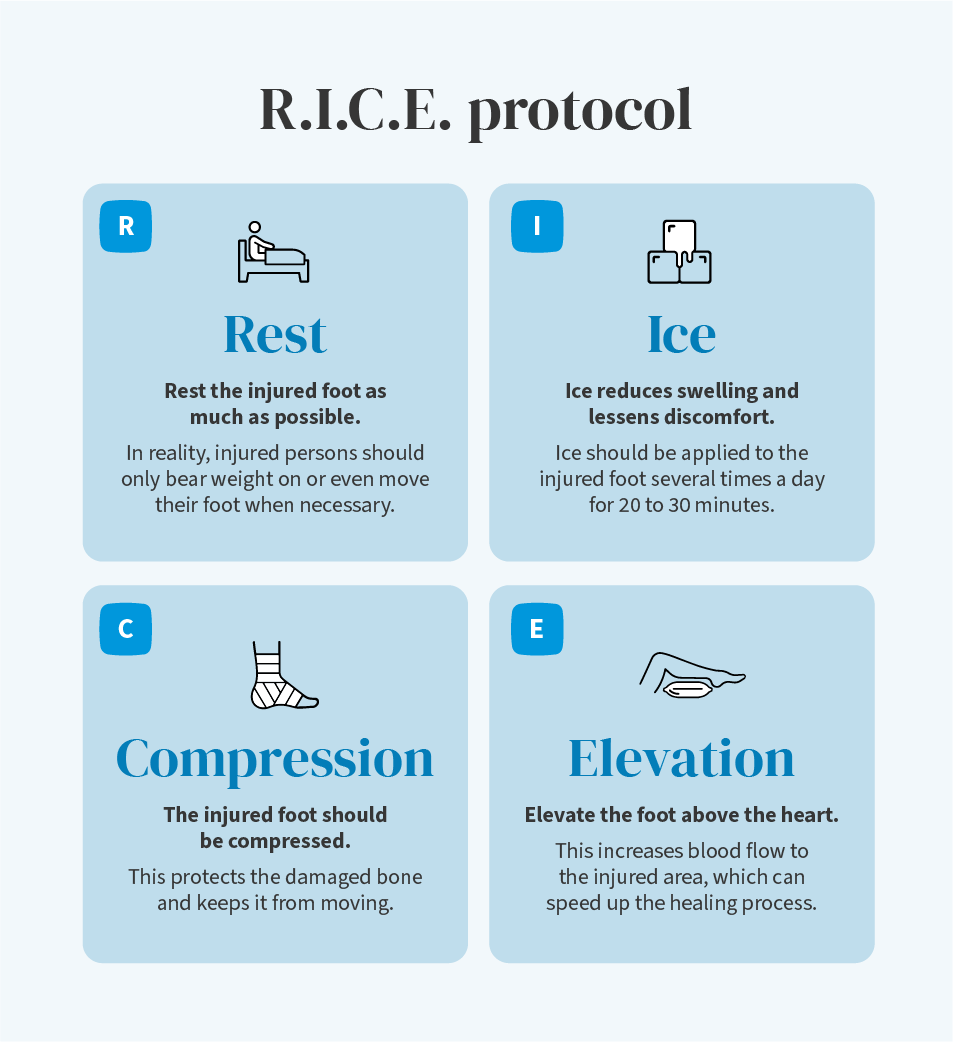Anatomy

The anatomy of the leg includes bones, soft tissues, blood vessels, nerves, and muscles.
Legs are so large that they are divided into separate sections based on their location. The calf muscle makes up the leg’s lower back part between the knee and ankle. The calf is divided into separate parts known as the gastrocnemius and soleus.
About
Overuse or injury can result in irritation or even damage to parts of the muscle, like fibers and connecting tissues. If this event is significant or serious enough, muscle strain could develop.
A muscle strain is separated into three categories based on severity.
- Grade 1 strains occur when the muscles are stretched but experience little or no tearing.
- Partial muscle tearing occurs in Grade 2 events.
- The most serious are Grade 3 injuries, where complete muscle tearing occurs. In certain instances, such separation completely removes the affected muscle from surrounding bone and other critical structures.
Causes
Overuse or acute injuries are typically the leading causes of calf muscle strains. Injuries can also result from simple everyday activities since these leg muscles move continually.
Risk factors
Your risk of straining your calf muscle increases if you take part in sports requiring continual running, making quick stops, or changing your direction suddenly. Runners’ and tennis players’ chances of experiencing calf issues are high. Similar injuries have occurred in people doing less strenuous exercises like climbing stairs or flagging down buses.
Damage can occur following sharp blows to the back of the leg or during falls when individuals bend or twist their legs to soften the impact.

Symptoms
Symptoms often vary depending on the strain’s severity and the calf area where the injury occurred. Both gastrocnemius and soleus strains often produce certain similar symptoms.
The most common symptom is pain. It can range from tightness to severe and sharp shooting pain in the back of the leg. Other symptoms may include:
- Redness
- Swelling
- Tenderness to the touch
- Skin discoloration
- Popping sounds when the injured leg is moved or stretched
- Leg weakness
More severe cases can result in significant mobility limitations and decreased flexibility.
Complications
A calf muscle strain could worsen when not identified and treated as soon as possible. In severe instances, such injuries could also lead to the weakening and eventual damage to other leg components resulting in more pain and disability, resulting in the need for far more aggressive treatment.
Diagnosis
Calf strains are not always simple to diagnose. These injuries often produce symptoms commonly seen in other physical issues involving the legs. Firm conclusions often need several steps and processes.
During the first phase, your doctor will ask you questions such as when the pain began, if you play any risk-increasing sports, or were involved in any type of accident such as a fall.
If your doctor thinks a calf strain might be present, they will likely perform a visual evaluation of your leg, looking for abnormalities such as swelling, redness, or bruising.
Diagnosis is usually confirmed using some type of internal diagnostic test, including ultrasound or magnetic resonance imaging (MRI) scans. These enable doctors to capture internal images of the leg and detect any noticeable damage.
Treatment
Calf injuries respond well to home care treatments and only need surgery in the most severe cases.
Nonsurgical treatments
Mild to moderate events often respond favorably to a first-aid protocol known as rest, ice, compression, and elevation (RICE). This is an abbreviation for (R) resting the injured leg, (I) applying ice to the wounded calf to bring down any swelling and ease associated discomfort, (C) compressing the leg to prevent movement and promote healing, and (E) elevating the leg above the heart to help reduce swelling and decrease blood flow to the injured area.

This initial phase is often followed by a brief course of physical therapy, designed to help restrengthen muscles that might have been inactive for extended time frames.
Surgical treatments
Severely torn calf muscles might need surgery. Surgical procedures are performed to repair damaged muscles or reattach them if they were completely ripped away from surrounding bones. Surgery is typically followed by a prolonged period of inactivity and physical therapy.
Recovery
Recovery times will vary. Mild to moderate strains often fully heal within weeks. Complicated cases requiring surgery could take several months to heal completely. Individuals often improve at their own rate, and recovery time is influenced by other factors such as the person’s age, overall fitness level, and if any other leg injuries are present, besides their overall health.
Prevention
Preventing calf strains is not always possible. One can reduce their chances of these injuries by properly stretching before any major exercise or athletic event, maintaining proper posture, and wearing the most appropriate and best-fitting footwear.
Videos
Related specialties
- ACL Injuries
- Arthroscopic Chondroplasty
- Articular Cartilage Restoration
- Deep Thigh Bruising
- Fractures of the Tibial Spine
- Iliotibial Band Syndrome
- Lateral Collateral Ligament (LCL) Injuries
- MACI
- Medial Collateral Ligament Injuries
- Meniscus Tears
- Muscle Spasms
- Partial Knee Replacement
- Patellar Fracture
- Quadriceps Tendon Tear
- Runner's Knee
- Senior Strong
- Shin Splints
- Total Knee Replacement Surgery
